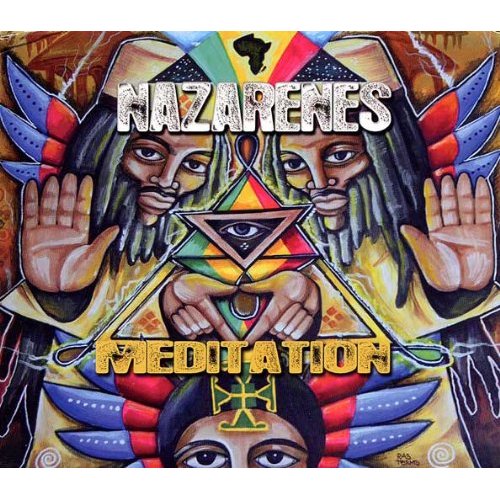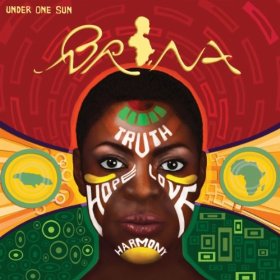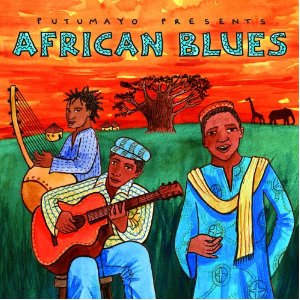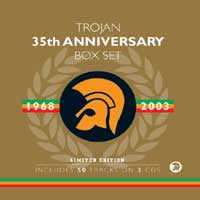 Various: Trojan 35th Anniversary Box Set, Trojan/Sanctuary, 2003
Various: Trojan 35th Anniversary Box Set, Trojan/Sanctuary, 2003
I confess a weakness for these Limited Edition Trojan box sets with 50 tracks on 3 CDs, but hey, thats got nothing to do with the topic at hand. The topic is how gutsy the folks at this label can be. They have attached the 35th Anniversary title to what is NOT a ho-hum repackaging of their biggest sellers (the sort of release that maximizes profits while turning off the faithful fanatic). Nor is it your second guess, a conglomeration of one or two tunes from each year of the labels existence, as I recall Motown doing. That would be impossible for Trojan anyway, given its extended dry periods.
So no, these are not the hits. This is more special than that. These are the misses, the unheard marvels, the inevitable casualties of a cruel UK marketplace upon which too many releases were enthusiastically but hastily unloaded. These are 50 low-flying reggae objects that to this point escaped the radars notice, and now suddenly the spotlight is beaming on them. Theyre looking good.
Not that every track is great, but a huge bunch are, and a healthy proportion are bloody marvellous. Theyre either short and sweet or short and punchy, ranging from 60s rocksteady to 80s dancehall. The album plunks covers of pop songs next to roots originals beside rollicking instrumentals right next to harmony trios alongside early toasters. Big-name performers (Linval Thompson and Johnny Clarke, among others) share the stage with the obscure (Brother Dan’s All Stars, for one). The skimpy liner notes credit a whole raft of well-known producers, including Scratch, Bunny Lee, Joe Gibbs, Derrick Harriottyou name them and theyre there.
The first two disks present, in chronological order, songs originally on such Trojan subsidiary labels as Duke, High Note, Blue Cat, Jackpot and Smash; the third begins the chronology anew with items released under the Trojan label itself. Consider tracks 5, 6 and 7 on Disk 1. First, Bim & Bam engage in an extended, fast talking argument over funky horns and piano, echoing Louis Jordans R&B from years earlier; then The Mad Lads harmonize on the pretty Mother Nature, catching my ear every time; and finally Slim Smith emotes in his soulful way, supported by not much more than bass and a bit of percussion. Disk 2 starts with an unusual (for reggae) vocal approach and song structure, immediately followed by a beautiful tenor sax piece by Roland Alphonso, followed by a Charlie Ace toast over the tune of Good King Wenceslas. As a sample trio from Disk 3, lets choose the anguished vocal by Carl Dawkins that precedes the Pioneers doing a hurtin song on top of a bubbly rhythm, which precedes Danny Rays solo ballad with strings.
Astonishing variety, astonishing quality. Notable pairs and trios and quadruples abound. If you like early to mid-era reggae (how could you not?), then you have to buy the Trojan 35 th Anniversary Box Set . You just have to, thats all. And soon.
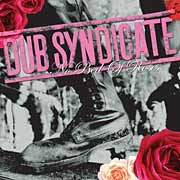 Dub Syndicate: No Bed Of Roses, Lion & Roots, 2004
Dub Syndicate: No Bed Of Roses, Lion & Roots, 2004
What weird and wonderful artwork for a reggae album. On the front and inside, glossy hot pinks and partial images of roses clash with stark and apparently unconnected b&w photos, presenting a potent, provocative, unsettling beauty. The music itself is just as potent, almost as provocative, not as unsettling, even more beautiful. It may take many listenings for me to detect all the links between image and sound, but thats fine, because the listenings will be pure pleasure.
Expert falsettoist Cedric Myton (The Congos) gets the album started with the title song. As Justin Hinds did many years earlier, Myton quotes the Jamaican proverb, The higher the monkey climbs, (the more) he exposes, which I consider the worlds wittiest maxim. Then comes a contemplative horn-driven instrumental. I cant tell from the liner notes who plays the sax here, but given its lovely melody line and appealing tonefragile yet almost roughI figure someone has been listening to Paul Desmond of the old Dave Brubeck Quartet. Yasus Afari next; his rhythmic dub poetry vocal establishes a conversational, good-natured, even humorous mood that forces us to pay attention to the words: out of many we are one.
Track 4: dub effects come on strong here, with Lloyd Forrests vocal limited to the occasional Fire burning interjection and some distant shouts of red hot; by the end the track is total dub. Then Yasus Afari again, with a quiet, engaging, toe-tapping song. You want a sing-along chorus? This is a talk-along one. Track 6 is an understated vocal by Uplifter, with lyrics about righteousness, keeping precepts, setting captives free. Cornell Campbell, a true vocal acrobat, gives his high-wire act over a safety net of powerful bass; his message is clichd but true for most of us: life is not a bed of rosesnothing comes easy. Adam & Eve borrows liberally from Lee Scratch Perrys medicine cabinet of remedies: the sampling, the lyrics about world leaders eager for super powers, the dub effects, the sturdy rhythm and especially the disembodied voices chanting we are controlling transmission. In his pleading yet proud style and his you-cant-ignore-me tone, our next guest vocalist, Gregory Isaacs, calmly narrates one of his socially conscious tales about violence down here in the ghetto. That one is followed a couple of dubs, then by a further abstraction of Adam & Eve. This gives out at the four minute mark, but returns at 5:24 as an additional unlisted song, Nuttin Nah Gwaan, sung by Ca$h U. Its every bit as worthy as the preceding songs, and comes as an unexpected, delightful bonus.
In fact, the whole disk comes as a delightful bonus to the massive world of recorded music: polished, inventive, melodic, meaningful, surprisingly coherent despite the variety of vocalists, and utterly captivating. This album is certainly No Bed of Roses , and it sure does make life easier to bear.
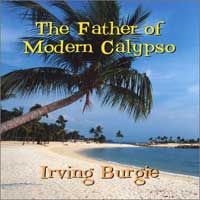 Irving Burgie: The Father of Modern Calypso, Valley Entertainment, 2003
Irving Burgie: The Father of Modern Calypso, Valley Entertainment, 2003
I did my best to listen to this album with fresh earsnot easy considering the ears have been around since Harry Belafonte made huge hits of most of these songs. But I did listen, and what I heard was wondrous. I heard appealingly old-fashioned, straightforward Caribbean music that brought a wag to my head and a smile to my mug. Of course the gorgeous melodies were intactwhat kind of hard-heartedness would it take to truly listen and not be entranced by them? What I didnt expectand perhaps I should havewas the directness of delivery that comes of having a confident songwriter deliver his own material. Its a refreshing approach, to trust the song so implicitly.
Yet what struck me most powerfully were the concrete words.
Well, duh. Yes, I know the words were there before, in Belafontes versions, so Im not sure what accounts for my delight. Perhaps, as a writer now, Im more aware of how challenging it is to keep things simple and graceful and meaningful all at the same time. Consider this utterly direct, unpretentious ending to a stanza: and the rum is fine any time of year. Hear the little internal rhyme? Catch the wit, the casual humanity, the effortless summary of what the stanza and the song are about? I see woman on bended knee, cutting cane for her family/I see man at the waterside, casting nets at the surging tide: simple, rhythmic, evocative phrases that express subtle and complex thoughts about memories, love and longing. Powerful, beautiful words. Thats what I barely noticed before, and what I appreciate infinitely more now.
I would love to quote more, but youll just have to get this album and listen anew yourself. Not that Im suggesting the words are the most important or dominant element of the albumthe listeners sense of delight will easily extend to the tunes, the musicianship and the gentle delivery. Nor am I preaching that you must listen to the lyrics in a self-conscious wayin fact the beauty of perfect lyrics is that you get to enjoy the sound and sense of the song without ever stopping to ponder how it all works so well. (Besides, if you did start analysing, you might begin with the lyrics of Nassau Crystal Waters, and justifiably tell me that Nassau crystal waters washing silver sand/Graceful palms a-swaying as to some mystical band is far too pretentious, to which Id have to reply that that song is an exception, and try to steer you to the delights of River Come Down.)
So lets not worry about a few detailsone other being the intended humor but unsettling ego-trip of the fluffy first track, another being the dated choral arrangement in Wish You Were Herebut rather simply accept that this album is, on the whole, a welcome delight, one that extends the life of a generous batch of songs that will likely never die anyway.
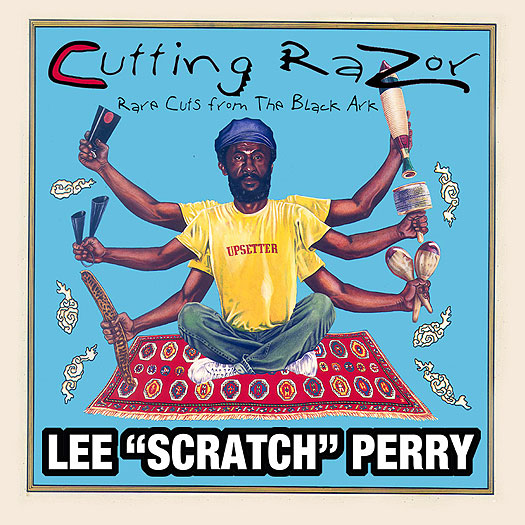 Lee Scratch Perry: Cutting Razor: Rare Cuts from The Black Ark, Heartbeat, 2003
Lee Scratch Perry: Cutting Razor: Rare Cuts from The Black Ark, Heartbeat, 2003
Q: How do you tell the difference between a Lee Scratch Perry regular album and a Lee Scratch Perry-produced various artists compilation?
A: A Perry-produced various artists compilation has actual songs.
Q: Then how can it be marketed as a Lee Scratch Perry album, with his name on the cover and spine?
A. Not sure. Has to do with marketing.
Q: Does this matter?
A. Not really. Its just we never know how to file this kind of Perry releasewith the individual artists or with the compilations.
Q: Where are we going with this Q and A thing?
A: Not sure. Maybe Perry inspired it.
Q: Meaning that his unique creativity tends to inspire a letting-go of expectations and a taking-over of instinct, all of which creates an attitude of controlled anarchy?
A: Huh? Whatever. Ask us about the album.
Q: Do we like the tunes?
A: All except the appalling excuse for a song called Feelings, weakly droned by Sharon Isaacs with the same kind of schmaltz that we first encountered in reggae back in 1971 with two similar tracks on Desmond Dekkers otherwise sparkling UNI album Israelites . By now we should have reconciled ourselves to coming across such gunk on occasion, but we just cant, because its only possible value is to remind us of how horrible North American pop music was prior to the influence of R&B back in the 1950s.
Q: Are we through venting?
A: Sure. Everything else is great. Max Romeos powerful One Step Forward shows up, which disappoints us only because were so familiar with the recording and already have it several times over. But the liner notes claim that half the tracks have never been released before, so we cant complain about that ratio.
Q: Highlights for us?
A: What A Sin, a seven-minute excursion into Perrys vocal and sonic idiosyncrasies that is as brilliant and appealing, if not as extreme, as the 12-minute-plus Free Up The Prisoners on a previous Heartbeat album. The Heptones harmonies on Sufferers Time. One Step Forward, which well never tire of. The contrast of U Roys toasting with childrens chanting on the catchy Yama Khy. Walk the Streets, such a pretty tune. 4 and 20 Dreadlocks with its extended hookiness and heartfelt vocal by Evon Jones. And of course, Scratchs production genius throughout.
Q: Do we recommend the album?
A: Yes, yes. Unreservedly. Indubitably. To heck with the albums Feelings; just go for it.
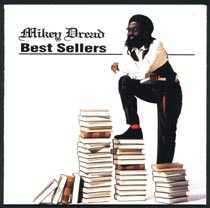 Mikey Dread: Best Sellers, Dread at the Controls, 2003
Mikey Dread: Best Sellers, Dread at the Controls, 2003
Without knowing what this album sells for in your town, Im proclaiming it a bargain. Heres why: for starters, you get over 78 minutes of distinctive roots reggae. You get the productive output of the extraordinary Mikey Dread as a) toaster, b) songwriter, c) lyricist, d) singer, e) Jamaican radio personality, f) producer, g) innovator, h) dubster, i) album compiler and j) engineer. You get selected highlights from eight albums, one TV series, and a concert or two.
Theres more. You get an assortment of your favorite session musicians: Jackie and Gladstone on keyboards, Horsemouth and Style on drums, Harry T and Skully on percussion, Rico and Vin on trombone; Flabba and Robbie and Lloyd on bass, Dwight and Chinna on lead guitar, Bingy on rhythm guitar, Deadley on sax, and on and on. You get printed lyrics, love songs, dubs, instrumentals, a special request, weird sound effects, Mikeys unique vocal twang, chugging rhythms, stomping rhythms, corny lyrics, empathetic lyrics, varying tempos, spoken interjections, and one of the gloomiest, most dejected voices youve ever heard encouraging you to enjoy yourself and to visit the gym.
And yet more. You get Warrior Stylee, inventive and complex, with a wildly effective interplay of singing, deejaying, sound effects, music, and lyrics. You get an early occurrencethe total in reggae now numbers several thousandof the line repatriation is a must. You get some off-the-wall lyrics such as the one equating a girls rejection of Mikey to a rejection of Jah, apparently not a good idea because the second coming of Jah will be with nuclear fire; and his story about seeing a dread in a barber saloon getting his locks cut off, causing Mikey to call upon Jah to strike the guy dead. In summary, you get a re-release of what was already an entertaining and full 1991 compilation, now supplemented by two bonus tracks, 18 songs in all. (Which reminds me; you also get out-of-date liner notes: previously unreleased songs on the 1991 edition can no longer claim to be previously unreleased. Duh.)
If your only exposure to Mikey Dread has been his invigorating reinvention of himself on the 2002 album Rasta In Control , then you may not be prepared for his former vocal style as represented on this album. Yes, Best Sellers is a different kind of treat altogether, and a true bargain to boot. It deserves to be a best seller.
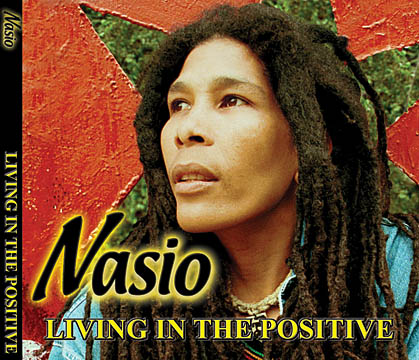 Nasio: Living in the Positive, Higher Love Music, 2003
Nasio: Living in the Positive, Higher Love Music, 2003
A trumpet fanfare kicks off Living in the Positive, as if announcing someone important. An anointed one, perhaps. Nasio. He used to be Nasio Fontaine, and if youre a true reggae lover, youve undoubtedly heard of him. If youre not a fan, you likely havent, and on the evidence of this album, you never will.
Some expect Nasio to be the next huge thing: the phenomenon that takes roots reggae to a much wider and highly appreciative audience. But I dont think so. Just listen. Sure, we can all hear the appealing voice that manages to exude strength and emotional fragility at the same time. Sure, anyone can hum the melodies and respond to those insistent one-drop rhythms. But thats as far as the non-oppressed and the unconverted will go in their appreciation, slightly shy of the adoration stage. They will hear trite, abstract lyrical content, with a delivery and arrangements they consider typically reggae. Nothing too tempting.
Listen now with those unconverted ears. First is the title track: its the Jah-is-on-my-side song, assuring us that “Good will conquer evil and announcing that the singer is a totally positive kind of guy. Its a robust intro. Then comes the Im-proud-of-my-African-roots track. The I-love-ganja song and the I-love-my-woman song are combined as number three, followed by the everyone-is-against-us song as Nasio sings, dont trust no enemy/Cant trust no friend (his positive outlook is pretty subtle here). Track five is the Im-okay-but-youre-not song (Racism and your hate still remains the same/Hatred never left you), which makes me wonder which listener will be more dismissive of that generalized accusation: the racist or the non-racist? Nasio is better at condemning than he is at targeting.
Track six, the life-is-rough song, is encouragingly entitled New Song and raises such startling new concepts as Road is Steepno rest for weary feetTougher the Fight/Sweeter the Victory. Next, the repatriate-to-Africa song, again expressing Nasios positive view of life: There is no justicethere is no peace. Of course we cant do without the theyre-a-bunch-of-hypocrites song, expressing yet more optimism: the sufferers/Are left to die. Unfortunately, the non-reggae fan wont have lasted long enough to enjoy the sparkling electric guitar solo in track nine, which is another Im-proud-of-my-roots songbiblical roots this time. The album is winding down now, with a second life-is-rough song, although Nasio never actually tells us what his tribulation was. Finally, the we-gotta-free-ourselves song, a big production number to close things off.
Im not saying that this album, and the immense talent it reveals, dont deserve your attention. Nasios music is highly enjoyable for those of us who are comfortable with reggaes clichs, and more importantly, may very well speak powerfully to those in the ghetto. What Im saying is that this album will never reach out to the world beyond, so dont get your hopes up. Here Nasio is more a spokesperson to the oppressed than a spokesperson for the oppressed.
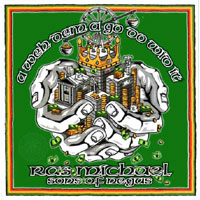 Ras Michael: A Weh Dem A Go Do Wid It, Zion Disc/ROIR, 2003
Ras Michael: A Weh Dem A Go Do Wid It, Zion Disc/ROIR, 2003
I remember twenty-some years ago reading the back cover of Ras Michaels Nyahbinghi album and being astonished to discover he had written all titles on it. Those titles included Ja Got the Whole World, which I had sung (except for the Jah part) in Sunday School twenty-odd years prior to that. Now I see that Ras Michael wrote everything on this new album too, including All Things Bright and Beautiful (which an old Protestant hymnal in my possession has the nerve to attribute to some guy who died in 1895) and Haile Selassie is the Chapel (yep, the same song that the Wailers recorded in 68 using the tune and some of the lyric of a C&W song covered by a host of artists in 1953.)
One might therefore conclude that either Ras Michael is a very old and truly remarkable gent who really gets around, or he has an ego problem. Or maybebut wait, theres no need to dwell on such an insignificant and petty ethical issue when this amiable album of religious precepts and moral instruction is beckoning.
So lets talk about the engaging music therein. Its all thoroughly based on nyahbingi drumming, of course, so if youre not yet exposed to the pleasures of that particular reggae genre, this would be a good album to start with. (Later you can graduate to Communication Drums by Prince Tebah and the Sons of Thunder, which is authentic, powerful stuff, but totally uncompromising and therefore perhaps a bit strong for un-attuned ears.) Anyway, A Weh Dem A Go Do Wid It starts with a ten-minute medley that has Rastaman Chant, a Ras Michael staple, segueing into Dry Bone, a fun, bouncy thing, then into two gentle pieces before closingthe whole medley featuring the lovely harmony background vocals of Natalie Azerad. Then come the unhurried, reverent readings of the Chapel song and the Bright and Beautiful hymn.
Lively horns announce a change of pace with the three-part Sweet Jamaica, one section of which is a spoken history lesson of the socio-political kind. Its followed without a pause by a history lesson of the musical kind, an opportunity for Ras Michael to list some of his hardcore reggae influences and peers. The rhythm flows steadily, seemingly forever, while off and on the teaching continues, trance-like. But eventually we get to the title tracks high-stepping, melodious, very pointed critique of those with riches, and then the album closes with the pleasant Cry Moon and its dub.
Thats about it. The album is just over an hours worth of the highly recognizable music of Ras Michael. True, it doesnt show much of his more adventurous sideif you want a recent example of that, try his dancehall-influenced Merry Peasant on 2b1 Multimedia. But if you want lots of that good old rootsy, deliberate, nyahbingi heartbeat anchoring accessible, tuneful songs, get this one.
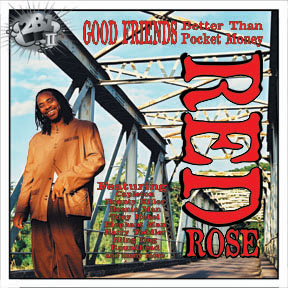 Red Rose: Good Friends Better Than Pocket Money, 2b1 Multimedia, 2003
Red Rose: Good Friends Better Than Pocket Money, 2b1 Multimedia, 2003
Michigan and Smiley could never have imagined this all those years ago. What started as a two-man tag-team match in the world of professional wreggae has become a free-for-all, with practically everyone in the World Wreggae Federation jumping inside the dancehall ropes at the same time. So on this album, Anthony Red Roses first outing as a contender (and a full 15-track bout at that), all the famous friends he made as a successful producer have joined forces. Capleton, Bounty Killer, Beenie Man, Elephantman, Jack Radics, Terror Fabulous andhang onto your seat14 more singers/deejays all crowd into the ring. And thats to say nothing of all the supporting musicians, including Sly, Robbie, Dean, Sticky and Dwight. Good friends better than pocket money, sure, and also apparently better than breathing room.
Given the circumstances, the expectations of the arena fans are going to reach to the rafters. But can that vast array of voices and instruments and rhythms put on a coherent show? Will there be disciplined musical shape to the songs? Surprising answer: ummm, yes. It may always verge on the edge of chaos, but yeah, it generally works. A voice comes in for a bar or two, then is supplanted or overpowered by another voice promoting its own, different chanted phrase. That one soon gives way to another, and the cycle continues. But the rhythms hold everything together more or less successfully, and despite the odds, a few winners do emerge.
So what does this semi-bedlam involve, you ask? A variety of tempos. Mega doses of hardcore flex with rough-voiced deejays. Subdued horns here and there. Some self-consciously meaningful lyrics. A goodly portion of bland, generic dancehall clich s. A sweet duet with Brown Sudar. Hooks on most of the tracks, usually of medium-strength. Groaners like, Girl, shake that money maker/Thatsa what your momma gave ya. And smilers like, No man never dis you up/No man never box you down/No man never run around and desert you. That line comes from the melodic Never Dis, one of my two favorite tracks, the other being the very catchy Build the Vibe, wherein a fast talker wants to meet a nice girl. In these and every other round, Red Rose combines forces with his guest vocalists, one or two or three, sometimes five others, always with a whole bunch of musical distractions going on behind and around them.
And thats why an attentive referee might have called this bout after maybe round five or six, citing too many performers in the ring. But I can only assume the referee was wining too vigorously to do what was sensible. Maybe next time Red Rose will have the confidence to come with a smaller contingent; if not, well, it could be another semi-frenzied rumble.
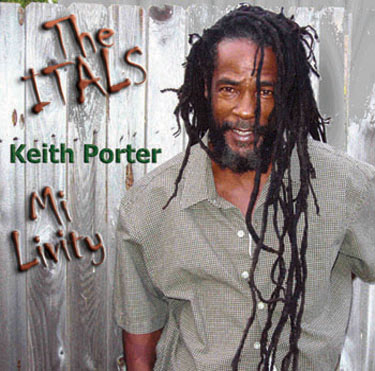 The Itals: Mi Livity, Suelion Music, 2003
The Itals: Mi Livity, Suelion Music, 2003
Whether The Itals are actually back is not the point, because The Itals music certainly is. Meaning that although Mi Livity is really Keith Porters vehicle, rather than that of the much admired harmony trio of old, it is a wonderfully listenable reggae album, and I love it. According to the liner notes, it was six years in the making. Well worth the wait, Id say.
Also according to the spotty liner notes, this is a mix of old and newnone of it previously released, mind youwith some of the rhythms salvaged from old original Itals tapes. The songs are all copyrighted for 2003, however, with newly recorded lead vocals and new vocal accompaniment by, among others, Keiths daughter Kada. His old Itals partners Ronnie Davis and Lloyd Rickets are credited too, although the where and when of their involvement are unclear. But none of that slight confusion matters much to the listenertheres no disarray in the music, only assured singing, expert musicianship, appealing arrangements, and great songs.
Out of 16 songs, I count 10 top-notchers, although even the lesser ones flow along pleasantly enough. But those top-notchers, wow. Heathen Rage has a vaguely menacing sound and lyrics that expand on the title. Mi Livity has growly vocal, strong harmony work, commanding lead guitar and pointed lyrics (Life is not like a one-way street, if you miss a turn you go round and repeat/You pass in this world but just once in a lifetime). In The Way You Are (and elsewhere) youd swear it was Gregory Isaacs himself delivering Isaacy lyrics within Isaacy tune, with nice harmonies in the chorus. The vocal of Omnipotent becomes stronger and more confident as the tune progresses, but its the horn charts that really make the song. Humanity has a quick, insistent beat that supports the sense of urgency in the sing-jay vocal and in the familiar sayings and proverbs that comprise the lyrics.
In its catchy rhythm and childish, sing-along chorus, Te Ta Toe has an appeal that must surely cover all ages and overcome any level of presumed sophistication. For that matter, so does the following song, Sing Song Children. The vocal on Battlefield is so fast its hard to pick up on everything, but the intelligent lyrics again underline social issues: Are you gonna tell me United we stand/When some people dont know where their next meal coming from? Holy, Holy is the highlight for mea beautiful hymn over nyahbingi drumming, thoughtful lyrics stinging as gently as its guitar accompaniment. Live You Live brings the album to a strong close with assured lead weaving around tricky vocal parts, all to a driving beat.
So, how does Mi Livity compare with the classic Itals albums? Its still socially conscious music, powerfully delivered. It still has strong musical values. How does it differ? It has even more hooks than I remember, and is imaginatively diverse in sound and approach. Not difficult changes to have to accept. The Itals music lives.



